
eG Forums Host
-
Posts
259 -
Joined
-
Last visited
Content Type
Profiles
Forums
Store
Help Articles
Posts posted by eG Forums Host
-
-
Modernist Cuisine at the eGullet Forums
Here at eG Forums, we have what is probably the broadest collection of information on modernist cooking anywhere. We've discussed sous vide, the general chemistry of culinary modernism, practical applications with colloids and starches, and much, much more. A lot of this discussion is contained in our topics about the books Modernist Cuisine and Modernist Cuisine at Home (we have topics on both the books and on cooking with the recipes they present), but we've been modern since before modern was cool -- click on the 'Recent discussions tagged "Modernist"' link at the bottom of this page for a small sampling of what we've been up to. And feel free to use the Search tool at the top of the page to look for specific terms or people.
Modernist Cuisine: The Art and Science of Cooking by Nathan Myhrvold with Chris Young and Maxime Bilet
Support eG, buy the book at Amazon.com
About the original book (Part 1, Part 2, Part 3)
Cooking the recipes from the book (Part 1, Part 2, Part 3, Part 4)
A Q&A with the Modernist Cuisine team
Modernist Cuisine at Home by Nathan Myhrvold with Maxime Bilet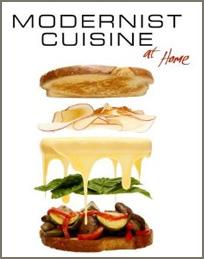
Support eG, buy the book at Amazon.com
About the book
Cooking the recipes from the book (Part 1, Part 2)
Other Modernist-related topics:
Recent discussions tagged "Modernist"
Sous Vide discussion index-
 2
2
-
-
We've now posted the full series of previously prepared Q&A exchanges between the Society and the Modernist Cuisine team, and it's time for your input! Please post your questions here, and editor-and-chief Wayt Gibbs will field them for the team.
-
Ragout of Grains from Pigeon en Salmis recipe, pages 5·5125 and 5·129 in chapter 21 on Poultry
eG: The plated-dish recipes seem to do four things: culminate the concepts and techniques in volumes 1–4; reference important culinary/historical touchstones (American barbecue, goulash, curry); introduce new techniques that didn’t find a place earlier in the volumes; and declare the team’s definitive culinary position on Big Questions like omakase, burgers, and shrimp cocktail. Were there other goals? What were they? Why those?
MC: Yes, we also tried to come up with dishes that were mind-blowingly awesome. As we’ve been serving some of these to friends, food writers, and chefs we really respect, the response so far suggests that, in quite a few cases, we succeeded. (See, e.g., here and here.) We’d hope to sit down at one of our favorite restaurants in the not-too-distant future and see one of these dishes, or something clearly inspired by our work, on the menu.
-
Those of you waiting for your books and wanting to get started: check out this parametric recipe for risotto in the MC excerpts topic.
-
eG: During the spirited debate we’ve had about risotto, many have concluded that par-cooked risotto was an inferior product, unnecessary unless you were in a busy restaurant kitchen like Thomas Keller, Gualtiero Marchesi, and others who use this technique. The parametric recipe for risotto covers only the par-cooked version: why is that? Did you test the two approaches side by side? What happened?
MC: Every recipe included in the book was tested in our research kitchen. The research cooks did indeed compare risottos made with and without a parcooking step. They found that parcooking does not degrade the quality of the final product and does offer a convenient way to reduce the finishing time for the risotto. But as the marginal note at the bottom of the page suggests, the recipes also work without a cooling step, and to illustrate this approach we include an example recipe on page 308 for pressure-cooked vegetable risotto that does not involve parcooking.
Note that many of the recipes in the table include cross-references to other pages in the book. Wherever space permitted, we used this approach to help readers connect the relatively simple recipes that appear in parametric tables with the more sophisticated example recipes and plate-ups elsewhere in the book. The ragout of grains that forms the second course of the Pigeon en Salmis plated dish, for example, includes pressure-cooked pearl barley, quinoa, and sprouted brown rice.
-
Parametric Recipe for Risottos, page 3·304-5 in chapter 12 on Plant Foods
eG: Talk about the design of the parametric recipe tables, which are a powerful feature that appears throughout the book. What are you trying to accomplish with those? Why use the concept of baker’s percentages and scalable recipes in them—aren’t those daunting to the typical cook?
MC: Unlike most cookbooks, Modernist Cuisine does not present one chef’s vision of how various dishes should be made. Instead, its overall aims are to document a culinary revolution in progress and to support the advance of that art by outfitting creative, innovative chefs with the know-how they need to make their ideas work. Nathan developed the idea of a parametric recipe—a table in which each row is a separate variation of a master recipe—as a way to illuminate the space available for chefs to explore.
The power of this format is that it enables us to give many more examples than cookbooks previously have in their master recipes with variations—enough that patterns become visible. By studying a parametric recipe you gain insight into how time, temperature, and other cooking variables shift from one formulation to another. That intuition makes it much easier to figure out your own recipes when you try something new—say, making a risotto from some grain we didn’t think to list in this table (or didn’t have space to include). Rather than making wild guesses about proportions and cooking parameters, you can extrapolate from similar ingredients and the patterns you perceive in the table.
With the exception of some parametric recipes, all the recipes in Modernist Cuisine include ingredient weights as well as scaling percentages. In such recipes, you should feel free to ignore the scaling percentages if you don’t find them useful. They can be an invaluable time-saver, however, when you need to adjust the yield of a recipe, as often occurs in restaurants and when entertaining guests. For more on how to use scaling percentages, see page 93 in “About the Book,” which is available for download free at ModernistCuisine.com.
-
eG: What exactly does it mean for something to boil, and what does that have to do with pressure? How can a cook use that information to cook more effectively and prepare better food?
MC: Boiling is more interesting and complex than you might think, and we cover it in detail in both chapter 6 on "The Physics of Food and Water" and chapter 7 on "Traditional Cooking." Did you know that there are several different kinds of boiling? Most cooks understand that water boils in mile-high Denver at a lower temperature than it does in seaside Los Angeles. Conversely, if you use a pressure cooker to increase the air pressure above the water, the boiling point increases, and the higher cooking temperature accelerates the rate at which flavor molecules diffuse and flavor-changing reactions occur.
-
“Extracted Under Pressure,” page 2·291 in chapter 10 on The Modernist Kitchen
eG: Why the Fick does the typical cook need to know about diffusivity?
MC: Adolf Fick noticed way back in 1855 that matter (such as molecules from a drop of perfume) spreads through a porous medium (such as air) in much the same way that heat spreads through a pan: it diffuses from regions of high concentration to regions of low concentration. That’s Fick’s first law of diffusivity, and one implication of it is that the classical approach to making stocks from large chunks of meat and vegetables is a bad one. The photo shows a much better approach that saves time and money while boosting the flavor of the stock: chop the pieces finely. But, as the section on this page explains, there is more to it than that. To accelerate all the flavor-creating chemical reactions that normally take hours to complete, you need to add pressure.
-
“Wet Food, Dry Food,” page 2·141 in chapter 7 on Traditional Cooking
eG: We all know that Nathan is a ‘cue expert/addict, and the amount of attention given to meat, smoking, sauces, sides, and more exceeds most similar sections (save, perhaps, coffee—insert Seattle joke here). Most folks outside the barbecue belt think that barbecue is BBQ is grilling is... you get the idea. So, setting aside Nathan’s jones, why is ‘cue so important to the project for the average reader?
MC: The book devotes 18 pages in this chapter and 12 pages in chapter 11 on "Meat and Seafood" to smoking. Part of those sections cover the rich American art of barbecue, which has spawned a plethora of myths and lore, a fascinating range of equipment, and innovations such as sous vide barbecue—all of which are covered. But these sections also explore the much wider use of smoked foods in other culinary traditions as well. Smoking is tricky to do well and consistently, so even more than most techniques it pays to understand the chemistry at work and the ways in which you can control humidity and its effects. The authors also delve into cold-smoking and the advantages and disadvantages of liquid smoke. Smoking is a subtle and challenging process, but when done well it can produce spectacular results that no other technique can achieve. Barbecue, as we use the term, is a slow-cooking technique, and it need not involve a grill at all. In the BBQ recipes in Modernist Cuisine, the authors recommend cooking the meat sous vide if possible.
-
eG: Give us a wet-bulb primer for beginners who haven’t read the book. How do you measure it? Why is it so much more important than dry-bulb/oven temperature? And, given that importance, why doesn’t my oven even think it exists?
MC: Dry-bulb temperature is what a thermometer measures when the sensing part of the gadget—the bulb—is dry. It is also what you control when you set your oven thermostat to a baking temperature. But because most food is quite wet, it doesn’t actually experience the dry-bulb temperature until it dries out. For most of the cooking period, the food instead “feels” a temperature much closer to what a thermometer would read at that spot if you kept its sensor wet: the so-called wet-bulb temperature (see photo). The difference between dry- and wet-bulb temperatures is often surprisingly large, and a major cause of cooking errors.
Unfortunately, conventional ovens have no reliable way to control the humidity. Our experiments with modern ovens such as combi ovens and water-vapor (Cvap) ovens, which do offer humidity controls, found that even they don’t perform as well as you’d like, especially at lower temperatures. (We present the detailed results in chapter 8 on "Modern Ovens.") There is an unmet need for humidity sensor technology that has sufficient accuracy, precision, and heat tolerance to reliably regulate wet-bulb temperatures. In the meantime, pressure cooking and cooking sous vide are probably the most reliable ways to control the true cooking temperature.
-
“It’s Not the Heat; It’s the Humidity,” page 2·102 in chapter 7 on Traditional Cooking
eG: “It’s Not the Heat; It’s the Humidity,” seems to be Modernist Cuisine’s equivalent of “It’s the Economy, Stupid,” the one phrase that structures vast swaths of the book, one of the most important concepts in the campaign. Which begs the question: what, exactly, is the campaign here? What does MC want us to do or know about cooking that we’re not doing or understanding? When we “finish” MC—whatever that could possibly mean—what would you want us to walk away with?
MC: As the second paragraph on this page hammers home, the effects of evaporation and water vapor are the main cause of erratic results in baking—and that is true as well for many kinds of cooking, for the simple reason that, despite their solid appearance, most fresh foods consist mainly of water. After reading the chapters on "Heat and Energy," "The Physics of Food and Water," and "Traditional Cooking," cooks will walk away with a much more reliable set of intuitions about what is going on inside their pots, pans, and ovens. If they then read the chapters on "Cooking Sous Vide," "Modern Ovens," and "The Modernist Kitchen," they will have a large repertoire of new techniques for better controlling the profound effects that water, with all its weird properties, has on cooking, resting, storing, and freezing food.
-
-
-
-
-
eG: We've talked a lot about the three italicized words in this excerpt: “So the question is really: why does blowing on a hot liquid make it evaporate faster? The answer is the wispy layer of ‘steam’ (fog, actually) that covers the top of the cup.” For someone who points to fog and says, “there’s steam,” that phrase is a very friendly way to say “Nope.” The book is full of such gentle pushes off a cliff. Can you talk about this Firesign-friendly, if disorienting, “Everything You Know Is Wrong” instructional strategy?
MC: There’s a difference between ideas that are technically wrong but mostly harmless, and those that are dangerously wrong. As long as you don’t stick your hand in the invisible steam between the spout of a tea kettle and the fog a few inches away from it (thinking that the air there is cool), confusing fog for steam is mostly harmless, albeit amazingly common. In contrast, the equally common notion that you can make ground beef safe to eat by cooking it to a particular temperature irrespective of how long you hold it there is a dangerously wrong idea, and our chapters on Microbiology and Food Safety Rules give it all the emphasis it deserves.
Because cooking is a complex and ubiquitous activity, it is full of folklore. In many cases the observation in the lore is true, but few cooks understand why it is true. And in many cases the lore is simply untrue. Throughout Modernist Cuisine, the authors tackle conventional wisdom of this sort wherever science can help explain what is really going on.
-
eG: The ethos of science threads through the book like a guiding principle. One example appears on page 1·288, in a seemingly throwaway introductory clause: “So the question is really:” It appears that part of the mission of the book is to ask the reader to consider precisely which question they “really” are asking. Indeed, many of the breakout sections start with a question, as if finding just the right question—a precision critical to experimental science—is something you want to teach. Why was this question asking so important to the mission of the book?
MC: Modernist Cuisine is designed in part to teach cooks the science that is most relevant to creative cooking, and to show them how to apply it in the kitchen. Just giving readers the facts doesn’t accomplish this; scientific thinking is much more than mere factual knowledge. It is driven by curiosity, a healthy skepticism of folklore, a willingness to experiment, and the ability to reason through the implications of how multiple phenomena at work will interact in the situation at hand. So wherever possible, we invite readers to follow us through the though process of reasoning out what is going on in situations where normal intuition fails. That makes for less didactic writing that is more fun to read, and at the same time shows by example how you can figure things out for yourself.
-
Sidebar on “The Physics of Why We Blow on Hot Food,” page 1·288 in chapter 5 on Heat and Energy
eG: In the midst of the extensive, detailed section about heat, you return to a deceptively simple moment that everyone’s familiar with: blowing on soup in a spoon. (Nice mince on the mirepoix, btw.) Throughout chapter 6 on "The Physics of Food and Water," there’s much discussion about why water is so “weird.” But here in chapter 5, water makes an early appearance. Why the rush?
MC: The answer is in the title: most of us think of this common act as blowing on hot food—not blowing on wet food. It’s only natural for people to think, as many do, that this works because you are somehow blowing the heat off the food. But as the first paragraph in the sidebar suggests, that mechanism doesn’t really make sense if you stop and think about it. This is a common misconception about heat transfer. So we placed it near the end of the heat chapter, two pages before we formally introduce the concept of the latent heat of vaporization, which is the tremendous amount of energy that water consumes (and thus removes from cooling food) when it transforms from liquid to vapor.
-
eG: Readers familiar with information design will detect a bit of Harry Beck, a bit of Edward Tufte, and a bit of Dorling Kindersley, with the voice of Charles Joseph Minard echoing in the background. Talk about how you chose to design the information that this enterprise delivers and the antecedents that were most important to you.
MC: From the outset of the project in 2006, Nathan had a clear vision of what he wanted to accomplish with the annotated cutaway illustrations. We worked with several designers, who drew on their experiences developing illustrations for National Geographic, Scientific American, The New York Times, and other publications as they explored the design space for those signature layouts. The desire to let the central photos sing led us to a fairly sparse design for the cutaways, and that set a style we carried through into the other kinds of illustrations. Wayt (the editor in chief) and Mark (the art director and lead designer) had previously worked together for many years at Scientific American on features that often used intricate infographics to explain sophisticated science or technology. They drew on that experience and some of the illustrators they had worked with at the magazine in guiding the information design of the art in Modernist Cuisine.
The eight pages here, excerpted from various chapters in volumes 1, 2, 3, and 5, were selected to illustrate the way in which the authors of Modernist Cuisine not only explain a fundamental principle or phenomena at work in the kitchen, but also provide concrete examples of its relevance in a variety of cooking situations; they then go on to demonstrate how to turn it to your advantage and to apply that knowledge in a fully developed recipe. The pages in this example are a few of the many in the book that touch on the crucial role that the evaporation of water plays in cooking, on how a cook can exert some control over evaporation (in this case by using a pressure cooker), and how that technique can be used to make an excellent, modern version of a classic dish (pigeon en salmis).
-
eG: Checking in at ~2,400 pages, the structure of the book could easily be overwhelming and unwieldy, but we’ve found that it is just the opposite. What organizing principles did you use to keep this thing wieldy?
MC: The first principle is that structure matters. We spent a full year building and refining the outline for the book. Once we sketched out all the pieces the authors wanted to include, we tried to find the optimal solution for that jigsaw puzzle that would introduce concepts in a logical order while minimizing overlap and outright redundancy among the chapters.
There is of course no perfect solution to this puzzle; some phenomena, like the movement of heat and the evaporation of water, are so common and crucial to virtually all cooking that they inevitably pop up throughout the book. So a second principle we relied on was to make liberal use of cross references. We took care to explain fundamentals like these thoroughly in the early chapters of the book, and added pointers to those pages whenever we briefly recapitulated the salient points in later sections.
A third principle was to avoid long jumps that would break up the continuity of the main narrative. We weren’t always able to achieve our goal of limiting a jump to no more than four pages, but we always looked for design solutions that keep interruptions to the body text short enough that readers don’t get disoriented. In some chapters, particularly in volume 4, this results in the chapters falling naturally into an organizational pattern that puts the main narrative first, followed by groups of parametric recipes and the example recipes that illustrate them.
-
eG: We’re interested on what’s sliding around the cutting room floor. What did you leave out? Why?
MC: The outline for Modernist Cuisine started out far less ambitious than what we ended up producing, but eventually grew to include even more topics that we were able to fit into the book. Early on, we decided to focus on savory cooking and not to attempt to cover pastries and desserts as well. At one point in the development of the outline, however, we had penciled in sections on the physiology and cognitive science of taste and smell, such as the mechanics of eating, how we learn to like flavor, the importance of cultural context in defining what a meal ought to be, and the roles of sight, sound, and muscular feedback in the emergent sensory experience we call flavor.
Some of the elements planned for this section did make it into the book, including sidebars on the fallacy of the notion that the tongue is divided into areas specialized for distinct tastes, why some people don’t like the smell of truffles, how foie gras and dog food perform surprisingly similarly in blind taste tests, and how to properly conduct a taste comparison trial. But many of the elements planned for that section were eventually cut from the outline. Similarly, we ended up not including a chapter we had tentatively planned on kinetics and reactions rates, which would have covered many of the nitty-gritty details of chemistry in the kitchen. The authors decided instead to discuss the most relevant of those concepts as they came up in other chapters.
-
eG: General reaction to the book often starts with the question: why isn’t this an e-book? Help us understand why a centuries-old technology was necessary to communicate your 21st century vision.
MC: Ink on paper is a far superior medium to pixels on a screen for so many aspects of what we hope to accomplish with Modernist Cuisine. We use large, sharp, brilliant photographs to draw readers into a topic and sustain their interest in ways that text alone simply can’t.
Color e-readers like the iPad didn’t exist in 2007 when we had to select a platform for our design. But even if they had, a large-format print book using Chroma Centric inks and stochastic screening would have been the right choice. Consider, for example, the way we use a cross sectional view of a baking turkey to explain all that goes on in this famously tricky holiday dish. The annotations that explain the crucial importance of the wet-bulb temperature (more on this later), the formation of a desiccation zone, and the several different ways heat moves through the bird could seem intimidating if they stood as text alone. On a small 10-inch-diagonal screen, the cutaway image would be far less stunning, and we would have much less space around it to place annotations than we do in the 24-inch-diagonal space of a two-page spread.
With our high-quality paper and printing, the text is a pleasure to read—an important feature in a 2,438-page book of more a million words—and the dynamic range of the photographs is fantastic, with blacks as deep as the abyss and detail that pushes the limits of the acuity of human vision. The technology to reproduce this experience on a screen does not yet exist.
Books have the additional important advantage of being portable and power-free. Trying to actually cook from one of our 100 illustrated step-by-step technique guides or one of our 1,500+ recipes would be a hassle if you had to haul a monitor around your kitchen. Our kitchen manual is completely water resistant; an iPad, not so much.
Finally, we settled on print because, thanks in large part to all the advances in digital technology, it’s never been easier to make a paper book. All of our text, photography, layout, prepress, and even printing-plate creation was handled digitally—it was all bits up to the point where lasers actually carved into metal. It’s also never been easier to sell a paper book. Because of the unusual physical heft of Modernist Cuisine, the vast majority of copies preordered so far were sold online, and we fully expect that trend to continue. A great deal of the explosion in awareness about the book is due directly to the power of online social media, such as eGullet.
-
Q&A with the Modernist Cuisine Team
The Society for Culinary Arts and Letters is thrilled to be able to offer this Q&A with the team behind Modernist Cuisine: The Art & Science of Cooking. This ground-breaking multivolume work has spawned two discussion topics, one focusing on the book and one devoted to cooking with the book.
In this topic, we will have the unprecedented opportunity to explore the book's development, design, and production with the team that made it happen. The book authors -- Nathan Myhrvold (Society member nathanm), Chris Young, and Maxime Bilet -- worked with editor-in-chief Wayt Gibbs to answer several questions we posed. The team also shares for the first time a multipage arc of content that traverses several volumes across a crucial content area: how understanding the weirdness of water can benefit your understanding of cooking. (Please click on the thumbnails of each page below to see a larger image.)
What follows provides an opportunity to get to know Modernist Cuisine that much better, a book that many are hailing as one of the most important publications in the history of cooking. In addition to the excerpts and initial Q&As, Wayt Gibbs will respond on behalf of the MC team to your questions.
We hope that you enjoy this opportunity to take a glimpse at this remarkable book.
-
2011:
- Lior (2011): Food, Glorious Food: From Cold Labaneh to hot Levivot: December 17 -25, 2011
- nikkib (2011): Stingray sambal, singapore slings and big trouble in Little India...: November 13 - 19, 2011
- mgaretz (2011): A mixed bag of cooking, eating and commentary from Northern California: November 7 - 12, 2011
- Panaderia Canadiense (2011): Cuy, Colada, and eating with the dead in Ambato, Ecuador: October 30 - November 6, 2011
- Percyn (2011): A behind the scenes look into an Indian Parsi household: October 23 - 29, 2011
- Alcuin (2011): In the middle - Eating & Drinking on the Isthmus: October 16 -23, 2011
- CaliPoutine (2011): Surviving and Thriving in the Land of Chains: October 16 - 22, 2011
- ScottyBoy (2011): Cooking, eating and riding a bike on the better side of the bay: Sept 18 - 29, 2011
- nolnacs (2011): Pork, peaches and pie. Saying goodbye to summer in Philadelphia: Sept 10 - 17, 2011
- EatNopales (2011): Quest for Grilled Quail wrestling Frog Legs perched on a Cactus Paddle: Sept 2 - 9, 2011
- SobaAddict70 (2011) : Of Hobbits and Hurricanes: August 26 - 31, 2011
- rarerollingobject (2011) : Mealtimes at the University of Woolloomooloo: July 23 - August 1, 2011
- Zeemanb (2011) : A sweetbread or so north of "Winter's Bone"...: July 17 - 25, 2011
- Peter the eater (2011) : More Maritimes: July 11 - 18, 2011
- Frogprincesse (2011) : From tartines to tikis: July 3 - 11, 2011
- Toolprincess (2011) : Food adventures from North Carolina : June 26 - July 3, 2011
- bmdaniel (2011): Going off the diet in Dallas and Chicago : June 18 - 26, 2011
- pastameshugana (2011): Looking for an Oasis in a Culinary Desert : June 6 - 12, 2011
- SobaAddict70 (2011) : Market basket blogging : May 28 - June 6, 2011
- genkinaonna (2011) : Carts, Cakes, and Coffee in and around the City of Rose : May 22- 29, 2011
- heidih (2011) : A slice of life in the South Bay of Los Angeles : April 30 - May 8, 2011
- Pam R (2011) : Passover Part III : April 17 - 25, 2011
- haresfur (2011) : not exactly bush tucker : April 9 - 16. 2011
- PopsicleToze (2011) : Honeysuckles and Huckleberries... Food from the Louisiana Countryside : March 21 - 27, 2011
- robirdstx (2011) : My Spring Break: By The Bay And Through The Pass : March 13 - 21, 2011
- Pierogi (2011) : Rollin' the bon temps on the Left Coast : March 5 - 13, 2011
- lesliec (2011) : Beef, boots and other stories : February 13 - 20, 2011
- nakji (2011) : Gong Xi Fa Cai - goodbye Tiger; hello Rabbit : January 30 - February 6, 2011
- johnder, slkinsey, weinoo (2011): A tale of two boroughs : January 23 - 30, 2011
- nickrey (2011) : Classical/Modernist: It's all Jazz in the City : January 9-16, 2011
- Shelby (2011) : From the field to the table. : January 2 - 9, 2011
- Lior (2011): Food, Glorious Food: From Cold Labaneh to hot Levivot: December 17 -25, 2011

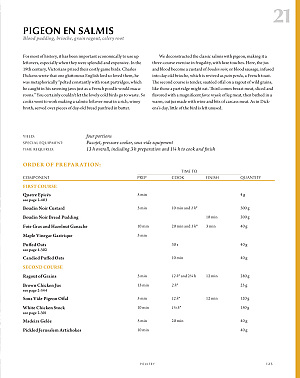
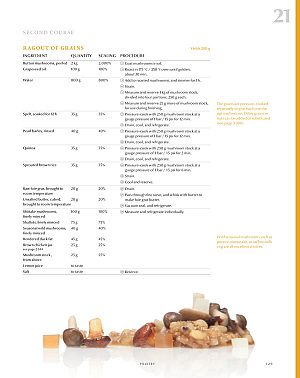
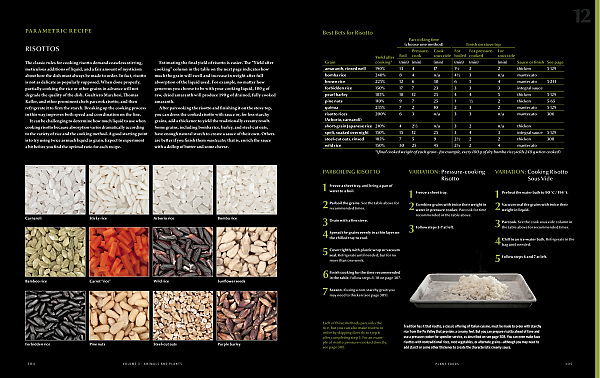

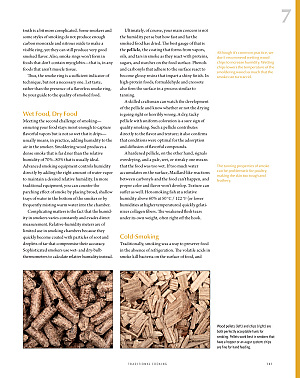
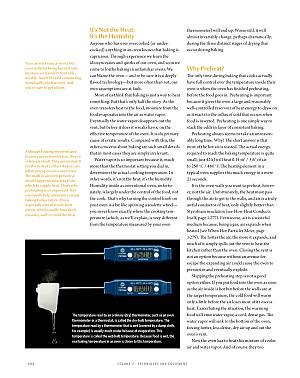
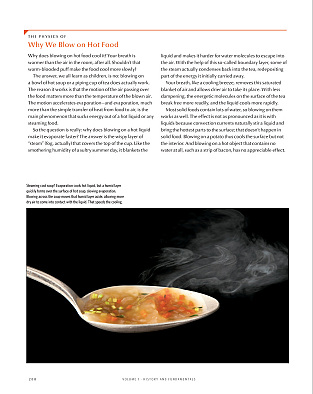
Open Forum on Food Politics
in Food Traditions & Culture
Posted
The discussion FDA war on French Cheeses has been flagged "Merge candidate" starting at this post:
It is proposed to merge this entire topic with the Open Forum on Food Politics, which now includes the former "Everything is Politics, Including Food" topic per this notice.